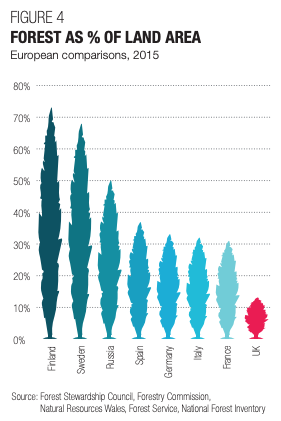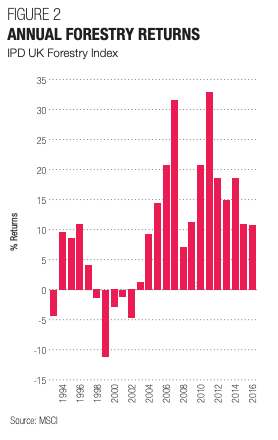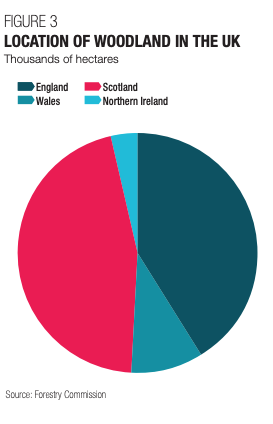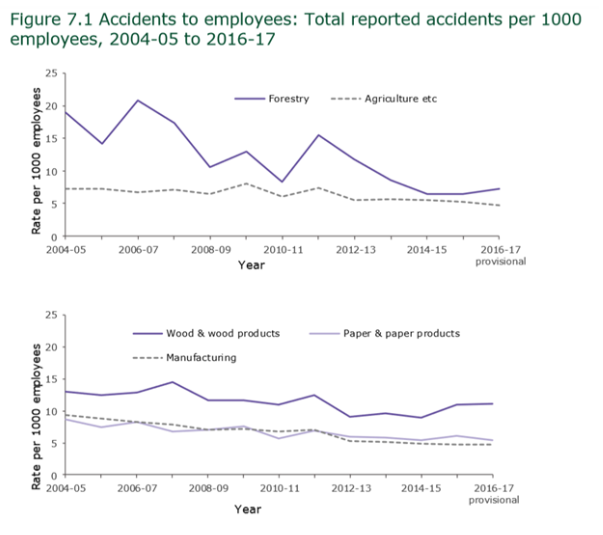
The State of the UK’s Woods and Forests in 2018
Only 13% of the UK is covered in woods and forests, which raises concerns on whether timber supply can meet demand, as well as the environmental impact. Let’s take a look at how the UK’s forestry industry fared this year.
By The Numbers
Last September, the Forestry Commission released its latest statistics on UK’s woods and forests. Key numbers in the findings include:
- The total woodland area in the UK is 3.17 million hectares, 43% of which are certified as sustainable
- Of the 3.17 million hectares of woodland, 10% is in England, 15% in Wales, 19% in Scotland, and 8% in Northern Ireland
- 13% of UK’s land is covered in forest, which falls short compared to the 38% average in the EU and 31% average worldwide
- 9,000 hectares of new woodland were created in 2017 to 2018
- The UK is the second largest net importer of forest products, second to China
- The UK imported £7.8 billion worth of wood products in 2017, which includes sawn wood, wood-based panels, wood pellets, and paper
- There are 17,000 people employed in forestry in the UK, and 27,000 in primary wood processing

Deforestation Threat
Plans to increase tree cover were announced in 2012 by the Independent Panel on Forestry, which aimed to increase woodland cover in the country to 15% by 2060. However, woodland conservation charity Woodland Trust said figures for the past two years fell short of the 5,000 hectares that are needed to be planted per year. As such, only less than half of the target figures have been achieved up until today.
This prompted the organisation to say that the UK is likely to be experiencing deforestation, due to poor planting rates, weak protection of ancient trees, and not replanting areas that were felled or destroyed.
“These figures are all the more shocking considering the growing evidence of the importance of trees and woods in tackling air pollution, improving water quality and offering scope to deliver natural flood management, not to mention what they offer for wildlife and their productive potential for the rural economy…. Something is drastically wrong with the way various government departments that share responsibility for trees and woods are failing to get enough new woodland created.”
Woodland Trust Director – John Tucker

To answer this threat, both the government and the private sector launched a series of initiatives:
- Seed banks – Kew Garden researchers preserve endangered species in seed banks. They aim to find genes in ash trees to help trees develop resistance to ash dieback and emerald ash borer.
- Coast-to-coast forest – In January 2018, the government unveiled plans to cover Northern England with 50 million trees. This will create a broad green rib that spans England, Liverpool, and the east coast city of Hull.
- New charter – In commemoration of the 800th anniversary of the Charter of the Forests, a new charter was introduced. More than 70 organisations, groups, and thousands of people helped create the new Charter for Trees, Woods, and People. It details ten principles that aim to guide policy and practice in the country.
Investment Performance
In terms of return on investment, the forestry industry has seen impressive growth in the past few years. However, due to the increase in timber demand, supply may prove to be a challenge in the near future, given the small percentage of tree cover in the country.
Knight Frank released its 2018 Forestry Market Update which shows the following results:
- Return on investment
ROI for the industry based on the latest available data in 2016 is at 10.7%. On a three-year basis, the average annual return is at 13.3%. Over 10 years, it stands at 17.4%, which is a favourable number within the country’s commercial property and other asset classes.
These performances are attributed to capital growth, which is supported by both timber sales and rising land values.

- Long-term investments
According to Knight Frank’s figures, there is a 74% rise in England’s farmland values over the last 10 years. Scotland, meanwhile, showed 85% growth.
Having tangible assets with positive ROI continue to interest investors. Favourable tax status also helps—100% business property relief for commercial forests after two years, no capital gains tax for sales incurred, and relief from inheritance tax for standing timber.
- Focus on Scotland

Scotland is home to the largest percentage of tree cover in the UK. As such, its government pushed for a tree planting initiative that would help curb the effects of climate change.
Scotland aims to grow from 10,000 hectares per year to 15,000 hectares per year by 2025, which translates to 22 million to 33 million trees annually. In addition to the positive environmental impact, this would also help curb the decreasing availability of timber in the country, especially since the UK imports 80% of its wood consumption.
Climate Change and the Environmental Impact
A couple of chapters of the Forestry Commission’s study were devoted to the UK’s tree coverage’s impact on the environment, including:
- Woodland bird index remaining stable since the 1990s
- 4,200 woodland fires took place from 2016 to 2017, affecting around 800 hectares
- The annual rate of carbon accumulation in UK forests is predicted to fall from 20 million tonnes CO2 in 2020 to 19 million tonnes CO2 in 2030
- 84% of the UK public believe that more trees should be planted to mitigate the effects of climate change
Health and Safety of Forest Workers

According to the latest figures, there is an increase in accident rates in 2016 to 2017 in the forestry industry. However, looking at the long term, it the trend is a general decline, although it continues to be higher than the average for all agriculture and manufacturing industries.
The Need For More Trees
It goes without saying that trees play a vital role in keeping our ecosystem balanced. In the UK, timber demand continues to outpace its supply, given the country’s low tree coverage density.
There is undoubtedly a need for more trees in the UK. Yet despite the negative trends, there are green shoots of progress. Scotland is rising to the challenge of deforestation and Government initiative such as 100% business property relief for commercial forests, are showing signs of halting deforestation. Plans for a new Northern Forest and the New Tree Charter are evidence of a renewed emphasis on the need to protect Britain’s woodlands and forests. Despite the warning signs, we may be turning a corner.
Watch this space for more news.
